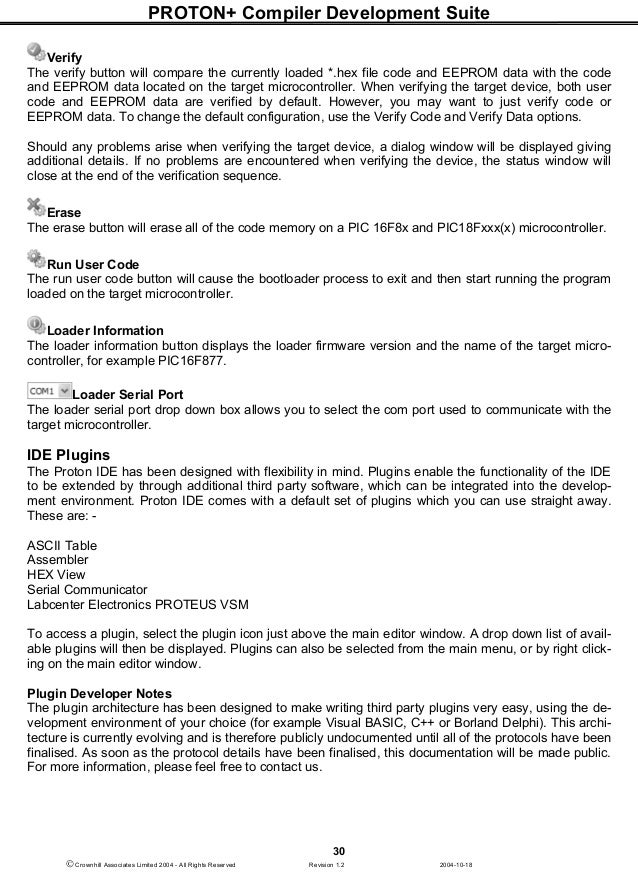Proton Basic Serial Interrupts

Scroll Of The Monk Pdf. May 15, 2017. Proton Basic Serial Interrupt Protocol Meaning. Atmel AVR 8- bit and 3. Unsurpassed Performance, Efficiency and Flexibility. Delivering ease- of- use, low power consumption and a high level of integration, Atmel. These devices offer a unique combination of performance, power efficiency. SPI Interface. The SPI Interface. Serial Peripheral Interface). SSn - see below). Primiary purpose is to reduce on- PCB wire routing by replacing the.
I found that when combining the HW and SW serial implementations on a PIC®, it often occurs that you miss characters because of the rather strict timing restraints of the software implementation. I have put together an interrupt based serial buffer that allows the HW serial port to be buffered automatically.
This way the 'normal' processing can continue and the SW serial port is not affected. This piece of code works on the 18F[24]5x as far as I have tested and does serial buffering.
It operates in a circular array way. When more then 65 characters are received, the first one will be overwritten and all 64 previous characters will be lost! So regular checking of the input buffer is still required. It should be possible to implement this processing with buffers of sizes which are a power of 2 (2-4-8-16-32-64-128-256) without any problems.
When using other sizes, makes sure that the generated code does not use the internal variables!! Code is constructed in such way that no compiler variables are altered when in the interrupt routine. This way the code should not interfere with the 'normal' run of the program. Example Code.
Hi I have started a new thread, can anybody tell me why the Code Below will not Output Serial under TX Interrupts. Where to start. I guess from the beginning. Since there isn't an OSC definition, I assume you're running at 4Mhz. And, with 4 Mhz, and BRGH (TXSTA.2) set to 0. The error rate for 9600 baud is 7%.
That's really high. If you use HSER_TXSTA 24, which sets BRGH to 1, the error rate goes to 0.16%. But then you manually set SPBRG to 25, which would be 2400 baud at 4mhz, so the 9600 gets discarded. INTCON =%10010000 Along with turning Global interrups on, also enables the External Interrupt INT. But the rest of the program doesn't use INT. 'PIE1.5 = 1 ' enable interrupt on usart receive This line is commented out, so the RX interrupt never gets enabled.
PIE1.4 = 1 ' enable interrupt on usart transmit You cannot use Transmit interrupts with HSEROUT, they are not compatible. Just like the compiler would do, I'll stop there and report [too many errors]. Interesting idea. Even if i'm not the best one here in the serial data communication, i feel that you'll need more than 1 PIC for that depending the size of the data you need to send/receive to be really sure you don't miss anything. The internal USART have a buffer of 2 BYTES for incomming data. Maybe enough to stop your serial OUT. There's many way to see the solution here.
The first that spring to mind now is Sending your data bytes by byte, then check the USART interrupt flag for incomming data each time a byte is sent. Your data to be send may be store in a EEPROM, ARRAY, or, or, or,. Depending what else your project do. 2 PIC can be a solution or not. Example of serial interrupt: Should be enough to start.
EDIT: Sorry darrel didn't saw your post. The above example should help anyway Last edited by mister_e; - 9th January 2006 at 23:56.